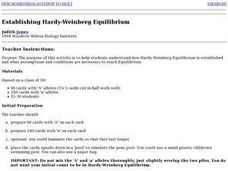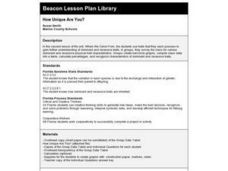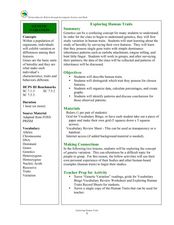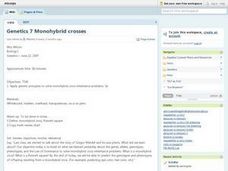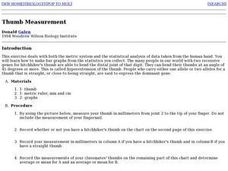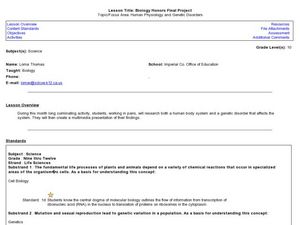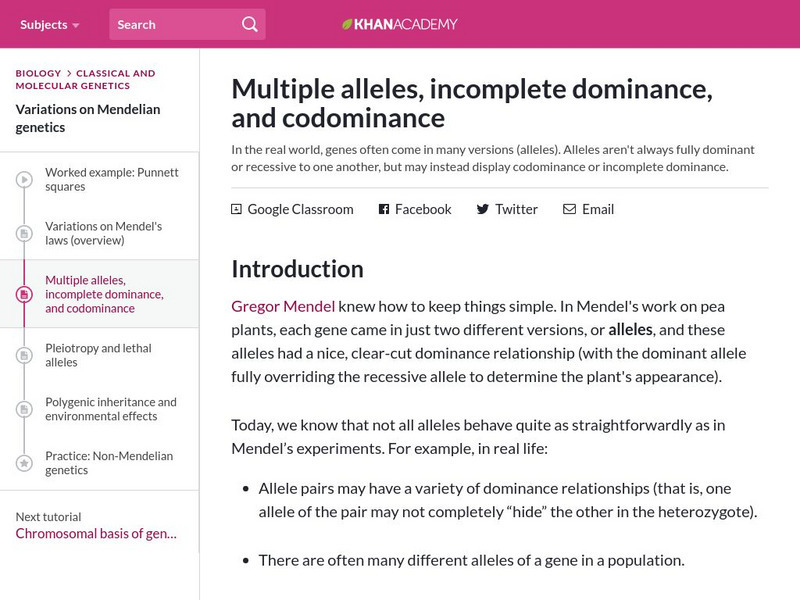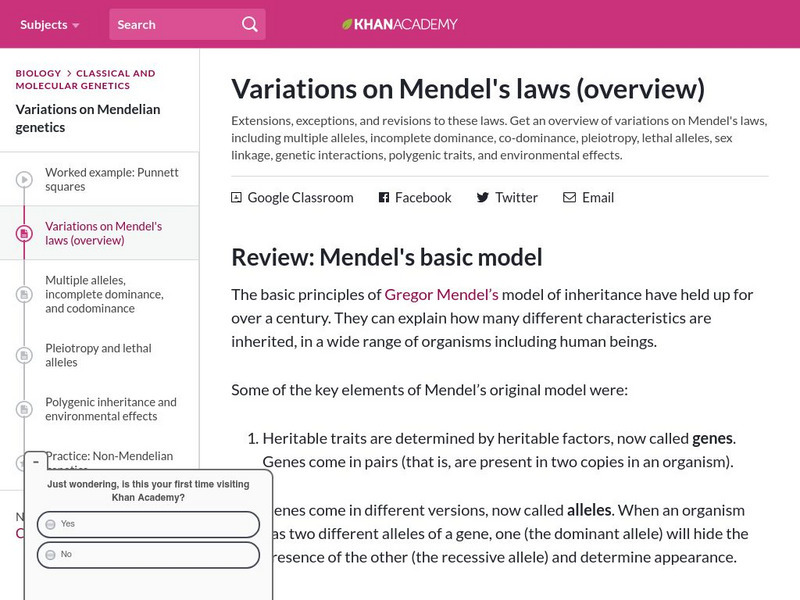Curated OER
Dragon Genetics-Independent Assortment and Genetic Linkage
Learners build chromosome models using popsicle sticks. In this biology lesson plan, students simulate the Law of Independent Assortment. They use Punnett squares to predict the resulting genotype and phenotype.
Curated OER
Establishing Hardy-Weinberg Equilibrium
Learners study how Hardy-Weinberg Equilibrium was established and what assumptions and conditions are necessary to reach Equilibrium. They record class data on their charts. Frequencies are calculated.
Curated OER
Using Blood Tests to Identify Babies and Criminals
Students solve a crime by matching a suspect's blood type to physical evidence collected at the crime scene. In this forensic science lesson, students identify the different blood types. They explain how blood tests work.
Curated OER
Super Hero Genetics
Students explore the concepts of phenotypes and genotypes. For this genetics lesson students work together to pick a superhero and determine the traits of the offspring.
Curated OER
How Unique Are You?
Students explore how genetic information is passed down from parent to offspring. Because of this, they examine how this causes the variation in each species.
Curated OER
Mechanisms of Evolution
In this evolution activity, students will answer questions about population genetics and the theory of evolution of species. This activity has 15 true or false, 6 fill in the blank, and 4 short answer questions.
Curated OER
Case of the Threespine Stickleback
Pupils examine why some freshwater populations of stickleback fish. In this macroevolution lesson plan students read a study packet then answer questions.
Curated OER
Chromosomes
Students explore genetics, chromosomes and DNA. In this genetics activity students design a chromosome and identify a family tree through genetics.
Curated OER
Human Genetics
This is a worksheet regarding human genetics where students can poll the class regarding specific traits.
Curated OER
Exploring Human Traits
Learners explore human behavior by participating in a class science game. In this human characteristics lesson, students identify different human traits that are passed down by each generation and the purpose each of them have. Learners...
Curated OER
Patterns of Heredity Vocabulary
Test your students' biology vocabulary skills with this review sheet, in which students define twelve different vocabulary terms related to patterns of heredity. Using the word bank provided, 9th graders complete eight sentences with the...
Curated OER
The Theory of Evolution
In this theory of evolution worksheet, students review vocabulary words associated with evolution including the different types of evolution patters. This worksheet has 5 true or false and 5 matching questions.
Curated OER
EMS Lesson 2: Outrageous Offspring
Students investigate the principles of probability that can be used to predict hereditary traits.
Curated OER
Monohybrid Crosses
Students define the terms monohybrid cross and Punnett Square. As a class, they discuss the Law of Segregation and probability to complete a practice problem. To end the lesson plan, they predict the probability of certain types of...
Curated OER
Mitosis and Meiosis Exercise
For this cell division worksheet, students answer 15 multiple choice questions about both mitosis and meiosis. Topics include the outcomes of the processes, the phases of the processes and steps within each process.
Curated OER
Thumb Measurement
Students practice measuring using the metric system and millimeters. They measure their thumbs and record their findings. Students record the findings of their classmates and find the average or mean for the two groups.
Curated OER
Blood Business
Students identify the different kinds of blood. In this biology lesson, students investigate the antigens, agglutinins and Rh factor using their own blood. They use Punnett squares to predict blood type of offspring.
Curated OER
Biology Honors Final Project
Tenth graders work on a project about cellular biology and genetics. In this biology lesson, 10th graders research about the assigned human body system and genetic disorders that affect it. They create a multimedia presentation and...
Cold Spring Harbor Laboratory
Dna From the Beginning: Genes Come in Pairs
This animated lesson will explain how genes are inherited in pairs, one from the mother and one from the father.
Khan Academy
Khan Academy: Multiple Alleles, Incomplete Dominance, and Codominance
In the real world, genes often come in many versions (alleles). Alleles aren't always fully dominant or recessive to one another, but may instead display codominance or incomplete dominance.
Khan Academy
Khan Academy: Allele Frequency & the Gene Pool
Learn how to find allele frequency and how it's different from genotype frequency.
The Association of the British Pharmaceutical Industry
Abpi: Genes and Inheritance
A complete, student-paced lesson on genetics and inheritance. Students work their way through illustrations and animated tutorials, and answer review questions along the way. There is a self-checking quiz at the end of the lesson.
Other
Univ. Of Connecticut: Hardy Weinberg Principle and Estimating Allele Frequencies
This site from the University of Connecticut is Kent Holsinger's site on The Hardy-Weinberg Principle. A great site to check out on the subject, with links to additional information, including: derivation of the Hardy-Weinberg Principle,...
Khan Academy
Khan Academy: Variations on Mendel's Laws (Overview)
Article reviews Mendel's basic model of inheritance then provides an overview of variations on Mendel's laws, including multiple alleles, incomplete dominance, co-dominance, pleiotropy, lethal alleles, sex linkage, genetic interactions,...



